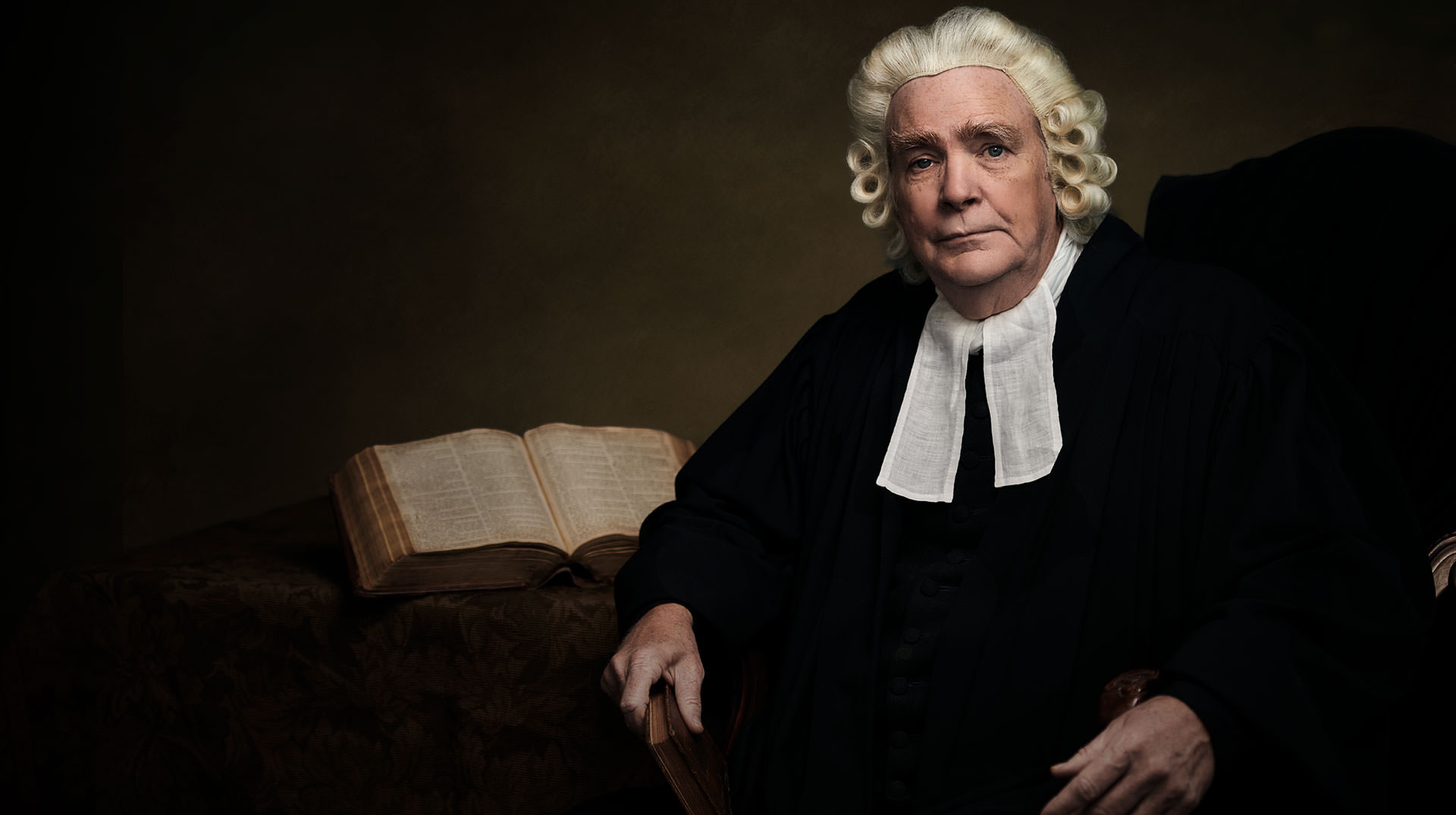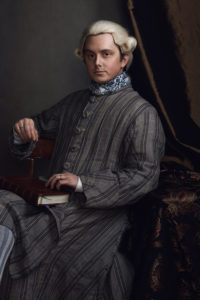Each wig in our 18th Century Collection is built from scratch using methods and materials from the 18th century. Check out these 18th century wig building techniques and see how we do it!
18th Century Wig Building
Creating 18th century wigs starts with a handmade foundation. The foundation for each wig is created by tailoring linen strips into an open cap and covering those with a hand-knitted mesh cap. The cap is created using silk thread. The thread has just enough tooth to softly grip the head which helps the wig stay in place. Linen and silk are both historically appropriate choices for the cap materials. Making net caps is an 18th century wig building skill but one that also applies to other handicrafts.
In this photo, Hannah is knitting mesh for a wig foundation. You can see the cap’s foundation in the background – the linen strips form the structure of the wig. The mesh is shaped over these and sewn in place. Fun fact, Hannah is also wearing one of our “discreet” historical wigs,. Unlike the 18th Century Collection wigs, our discreet wigs are intended to look as though one’s own hair has been coiffed for the era.

What kind of hair was used for 18th Century wigs?
18th century wigs were made with human hair, yak hair or horse hair. All of our wigs can be built with human or yak hair. Human hair wigs have a finer texture and a more lifelike appearance. They’re available in just about any color and texture human hair comes in! Yak is coarse hair from the belly of yaks. It’s thick and crinkly, which means yak wigs can be very full and dense. Though yak hair can be dyed, we only offer yak hair in natural ivory, consistent with the era.
What about the hair? Each wig is constructed from strips of hair, called “wefts”. These strips of hair are each handmade through a process known as wefting. Every strip is built to be exactly the right size for the area of the wig foundation it is sewn to. When all the strips of weft are complete, each strip is sewn to the wig foundation.
Yak hair in the hackle. Hackles have been used by wig makers for centuries to hold, sort and mix hair. Our hackle was created to look like those used during the 18th century, though the modern designs have not changed too much.

You can learn more about the wigs in our 18th Century Collection home page.





Leave A Comment